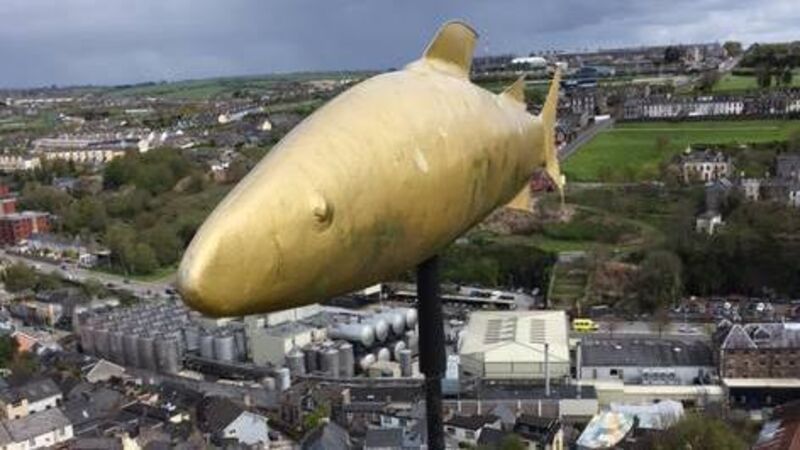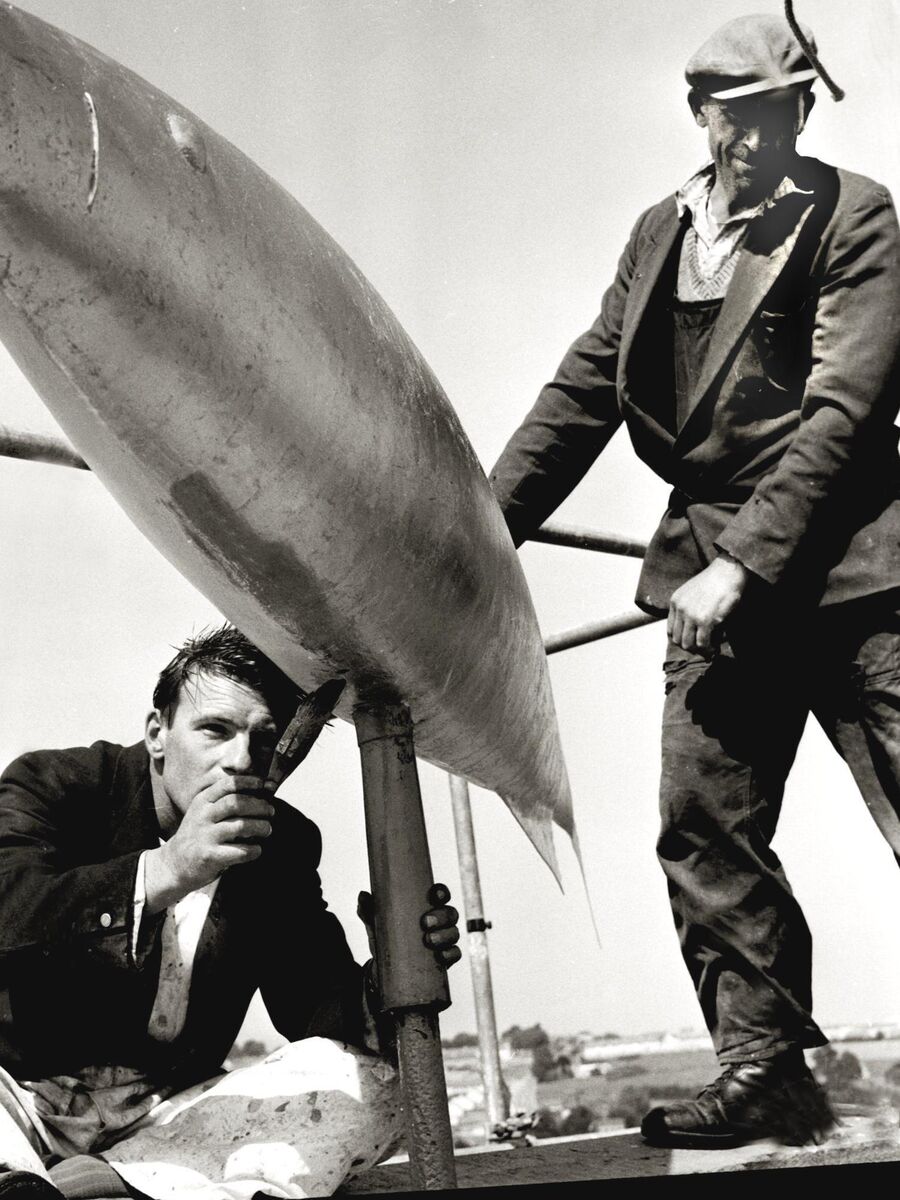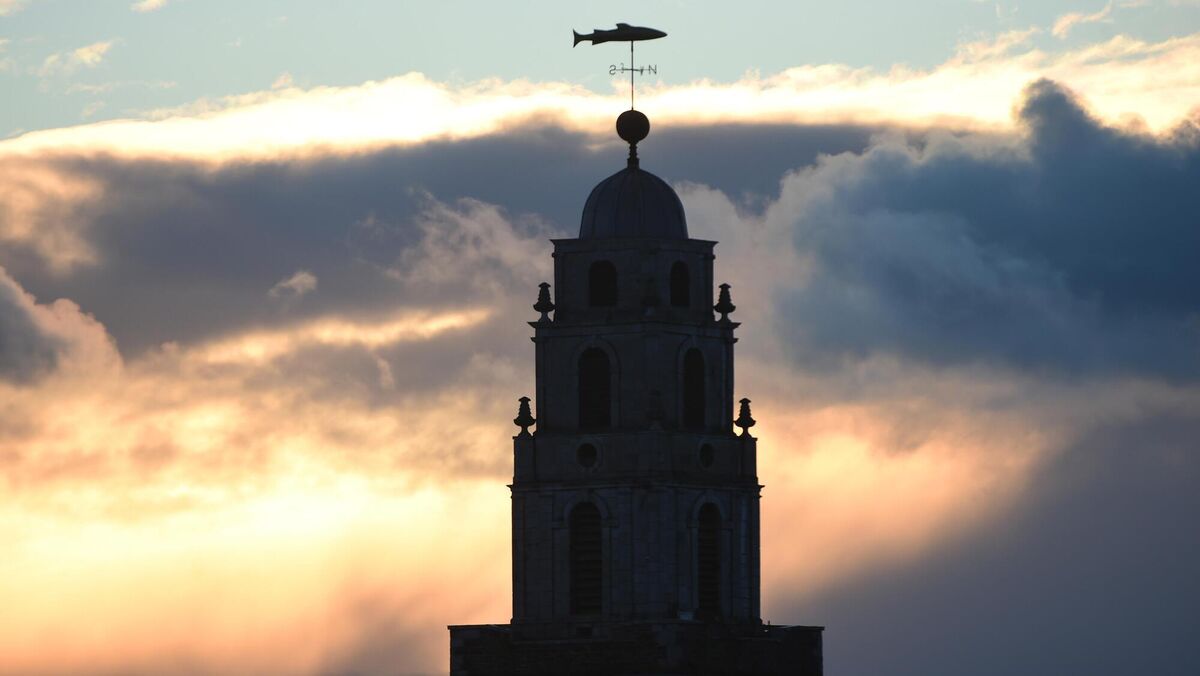Cork In 50 Artworks, No 22: The Goldie Fish on St Anne’s Church, Shandon

The Goldie Fish on top of Shandon.
The Goldie Fish on St Anne’s Church, Shandon – a salmon-shaped weathervane, eleven feet three inches long and gilded in gold leaf - is one of the most familiar sights on the northside skyline of Cork city.
The Goldie Fish has featured in story and song; in the 1990s, Conal Creedon gave the title Under the Goldie Fish to his long-running series on RTÉ radio, while local cult band Five Go Down to the Sea featured a track called There’s a Fish on Top of Shandon (Swears He’s Elvis) on their 1983 Knot a Fish EP, which also featured an image of the church on its cover.
St Anne’s dates to 1722, but the cupola that houses the bells was not added until decades later, and the Goldie Fish was probably installed in the late 1750s.
“We don’t know where it was made,” says local historian John Mustard, who served as the church organist for 19 years. “But the fish is an ancient Christian symbol, and it’s also an ancient Irish symbol and a symbol of Cork city; there was a salmon fishery down on the River Lee for years, run by the Franciscan Order.”
“The salmon is a symbol of ambition as well,” says Marisa O’Mahony, the Tower Manager at St Anne’s. “The gold salmon was a statement, as if to say, we’re here. The McOstrich family were wealthy merchants in the city, and they were heavily involved in the planning and funding of it.”

In spite of being 179 feet off the ground, the Goldie Fish has had to be taken down for repair and maintenance on several occasions. “The last time was in 2002,” says Mustard, “when the workmen found there were bullet holes in it. The fish was likely used for illegal target practice by the soldiers in Collins Barracks on the Old Youghal Road.”
The bullet holes are thought to date to the 1920s, though no one knows for sure whether the culprits were the British troops stationed there up to 1922, or the Irish who came later. At any rate, the damage done was nothing major. “I talked to the men who repaired it that time, and they filled the holes with Isopon.”
The fish was last inspected for damage in 2018. “We had work done on the dome that year, after Hurricane Ophelia lifted the lead,” says O’Mahony. “The Goldie Fish was put spinning every which way in the storm, but the workmen checked up on it, and it was fine.”
The fish is re-gilded every twenty years or so, to maintain its gleam. “It will probably need doing again in four or five years' time.”
The Goldie Fish is not the only attraction at St Anne’s, of course; the tower also houses the famous Shandon bells, which visitors are allowed ring out across the city, while its four clock faces are notorious for telling different times, thus saddling the tower with the nickname, the Four-faced Liar.
Visitors to the tower will also encounter the two lead statues on the first floor that lend their names to Bob and Joan Walk, the laneway on the south side of the church where former Taoiseach and sportsman Jack Lynch was born and reared.
“Bob and Joan date back to the old Greencoat School, which was where the Kinlay Hostel is now,” says O’Mahony. “The school was opened as a Church of Ireland charity project by Rev Maule of Shandon in 1715. There were twenty boys and twenty girls, aged between seven and 12, and their uniforms were green. The two statues are supposed to be of the first students; they stood on the pillars either side of the gate, with a charity box at their feet.”
Mustard remembers that the school was torn down in the 1950s, though by then it was closed for some time. “Bob and Joan were taken into Shandon for safekeeping around then,” he says.

For the most part, this seems to have ensured their preservation, “though one of Joan’s arms has come off. We keep it in a cupboard in the vestry.”
Pre-Covid, St Anne’s was always a popular spot with tourists, who came to ring the bells, to enjoy the view from the parapet at 120 feet, or just to gaze up in wonder at the four clock faces and the Goldie Fish high above.
“People love coming up here,” says Marisa. “They know it’s an old part of the city. St Anne’s is not the only attraction, of course; there’s Firkin Crane, the Butter Museum and the old Butter Exchange as well.” As the country re-opens, visitors are finding the place again, “but if the numbers get back to pre-Covid levels, when we had hundreds coming in every day in the summer, we’ll probably have to look at pre-booking tickets. You have to respect the space.”


